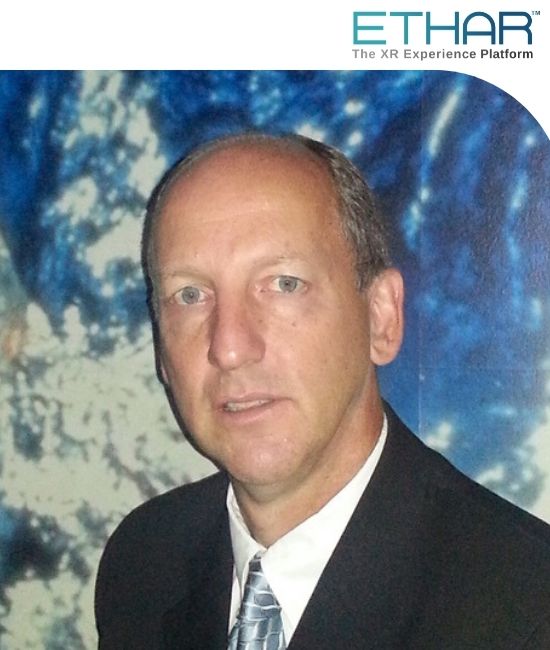10:00 AM - 10:25 AM
Description
As AI and machine learning advance, human augmentation becomes less dystopian and more utilitarian. There is definite trepidation about the increase of machines in the workforce, many fear for their livelihood, robotic overlords and other such visions of how a robot / AI future would look. Some roles may disappear, others will emerge bringing employment to more people. Recent global disruptions, shifting marketplaces, and other unexpected situations have magnified the need for flexibility and new ways of working. Technology will further revolutionize the relationship between people and technology, powering us towards greater productivity.
As organizations gradually transition out of ‘survival’ and review what lies ahead, the experience and lessons learned from 2020’s biggest remote working experiment show us the best world of work is ours to create, if we are willing to adapt. Leaders must address the significant upskilling and augmentation that will be required to elevate their workforces and communicate a compelling vision in which technology plays an additive, not subtractive role, in the lives of employees- empowering them, making work more interesting, productive and meaningful, so that people can think, learn, and create.
Talking points:
• How NEW is augmentation at work?
• Is it replacing or enhancing, or both?
• Greater digital divide, or new employment opportunities?
• Does EQ currency come into play?
Speakers

10:30 AM - 10:55 AM
Description
Automation is not the future, human augmentation is...
A simple strategist’s guide to successfully augmenting human capabilities to drive scalable value
•There can be no success without a vision.
•Evolution vs revolution.
•Rethinking how we work.
•Culture eats strategy for breakfast and technology for lunch.
•Continuous Innovation, the new continuous improvement?
•When you have the ideas but the plants have the money.
•Millennials, meet the Gen Z workforce.
•Upskilling for factory of the future
•Standards are meant to be modernized.
•Success is not final, failure is not fatal (Winston Churchill).
Speakers

11:20 AM - 11:45 AM
Description
Mobile augmented and virtual reality are undeniably shaping the future of how we consume and experience content. However, every player in the field faces major challenges that limit the growth and roll out of immersive technologies: Mobile devices come with their own limitations in computing and graphics power, the device market is fragmented, and the industry has concerns about data security. To address these challenges, allow the market to grow and introduce the next level of AR/VR applications we need platform based XR streaming. Join Holo-Light CEO Florian Haspinger and Evan Helda, SR. Specialist Spatial Computing at Amazon Web Services, as they introduce a new XR Streaming as a Service platform to the world – to provide the industry the potential to mass adoption of their XR use cases and mass rollouts in less time than ever before.
Speakers


11:50 AM - 12:45 PM
Description
If you are tasked with implementing AR and VR in your company then this session is for you. It can be difficult to separate the hype from reality when it comes to implementing emerging technologies. Everything works great in a pre-recorded demonstration online and it might even perform well in a training center or conference room. But we live in the trenches and it’s a different environment there. In this session we will hear from real industry experts that have forged the path by putting technology in the hands, and on the heads of factory workers, warehouse employees, engineers and technicians on the front lines. During our discussion we will discuss:
The toughest lessons we’ve had to learn in implementing XR
Where have we found allies in our journey
What obstacles stand in the way of adoption
The right way to look at vendor relationships
Why there isn’t one solution for everyone and how to deal with this reality
How to manage expectations with your leadership and customers
Is COVID helping our hurting the business of Extended Reality
Pro-Tips on how to simply get things done in XR
Speakers



02:15 PM - 02:40 PM
Description
This presentation will cover the significant impact that remote collaboration platforms have had within the pharmaceutical industry. Attendees will understand the clear value these systems provide for compliance-driven organizations, the long-term impact in optimizing collaboration within organizations, and how to deploy this technology at scale. Supporting data and case studies will be presented, demonstrating how pharmaceutical, laboratory, and manufacturing teams are successfully leveraging augmented-reality-enhanced global collaboration systems to improve efficiency, training, operator reliability, safety, and partner/vendor interactions. Attendees will also understand how the COVID pandemic acted as a catalyst for the rapid adoption of these platforms and why ongoing implementation of these platforms has become crucial for the life sciences industry.
Speakers

02:45 PM - 03:40 PM
Description
Augmented Reality for enterprise applications has been advancing. Scores of pilot projects have proven the ROI of AR solutions and we’re beginning to see production systems in daily use. Still, enterprise use cases are particularly challenging. Advancements in augmented reality for the energy and utilities fields have, in some ways, lagged behind progress in other industries. In other ways, these markets are poised to leap ahead. Simultaneously, the convergence of spatial computing, AI and Digital Twins is providing fertile ground for “Intelligent AR” to become the essential user interface for field workers.
This panel of distinguished experts from the oil and gas, electric utilities, and geospatial data communities will discuss their perspectives on evolution of enterprise AR. They’ll offer use case examples and practical lessons-learned. They’ll also offer their visions for future development. The panel will conclude with a Q&A session and offer suggestions for how new participants in the AR ecosystem can get involved.
Speakers




04:05 PM - 04:30 PM
Description
Mason Sheffield, Sr. Director of Creative Technology at Lowe’s Innovation Labs, will demonstrate how mixed reality and digital twins can shape the way Lowe’s associates can serve customers, and how customers may experience their homes in the future.
Speakers

04:35 PM - 05:00 PM
Description
The presentation includes an overview of Perception Grid‘s cloud-native infrastructure which enables bi-directional, real-time interaction between multiple users while simultaneously orchestrating immersive video, 2D media and text. The session highlights PerceptionGrid’s graphing database technology, which facilitates building relationships between data, to drive contextualized multimodal presentation of XR media, triggering, enhancing then accelerating the cognitive processes of perception, problem-solving, and learning. The session will showcase through demonstration how Perception Grid helps accelerate cognitive processes via XR to solve real problems.
Speakers




05:05 PM - 05:30 PM
Description
As business travel reduces in the pursuit of sustainability and talent shortages necessitate the widening of the recruitment process, how can VR and AR both give us back what we lose when working remotely and elevate the collaborative experience of employees in global firms?
Speakers

05:35 PM - 06:00 PM
Description
The field and customer service operation has seen a dramatic shift in the past 15 months. Due to the pandemic, the ability to physically get access to equipment or a customer site has been limited or, in some cases, restricted completely. As regions of the world re-emerge into a next normal state at different rates, organizations will operate using a variety of service models that rely on remote resolution, collaboration, and engagement. Customer experience is becoming a critical differentiator, and the way organizations engage customers will become a higher priority. This session will focus on the changing landscape of service operating models and the technology to drive the next wave of service and customer experiences. In this session, experts from CareAR will discuss: a) Changing landscape and key drivers attributing to change b) Customer examples and use cases c) AR/AI technology and tools available to service employees and customers that optimize remote and self-solve support, moving from a reactive/break-fix service model to a proactive and predictive approach to service.
Speakers

